Abstract
Freezing of stem sections and entire twigs of hemlock (Tsuga canadensis) has been demonstrated to occur without increasing the resistance to the movement of water through the frozen part after rewarming. This was interpreted to mean that freezing did not produce cavitation in the xylem sap even though A) the sap was unquestionably frozen; B) it contained dissolved gases; and C) it was under tension before freezing and after. Freezing stem sections of some other evergreen gymnosperms during the summer again produced no evidence for cavitation of the xylem sap. On the other hand, freezing stem sections of some angiosperms invariably increased the resistance to sap flow leading to wilting and death in a few hours when the sap tension was at normal daytime values at the time of freezing. These results were interpreted to mean that the bordered pits on the tracheids of gymnosperms function to isolate the freezing sap in each tracheid so that the expansion of water upon freezing not only eliminates any existing tension but also develops positive pressure in the sap. Dissolved gases frozen out of solution may then be redissolved under this positive pressure as melting occurs. As the bubbles are reduced in size by this ice pressure developed in an isolated tracheid, further pressure is applied by the surface tension of the water against air. If the bubbles are redissolved or are reduced to sufficient small size by the time the tension returns to the sap as the last ice crystals melt, then the internal pressure from surface tension in any existing small bubbles may exceed the hydrostatic tension of the melted sap and the bubbles cannot expand and will continue to dissolve.
Full text
PDF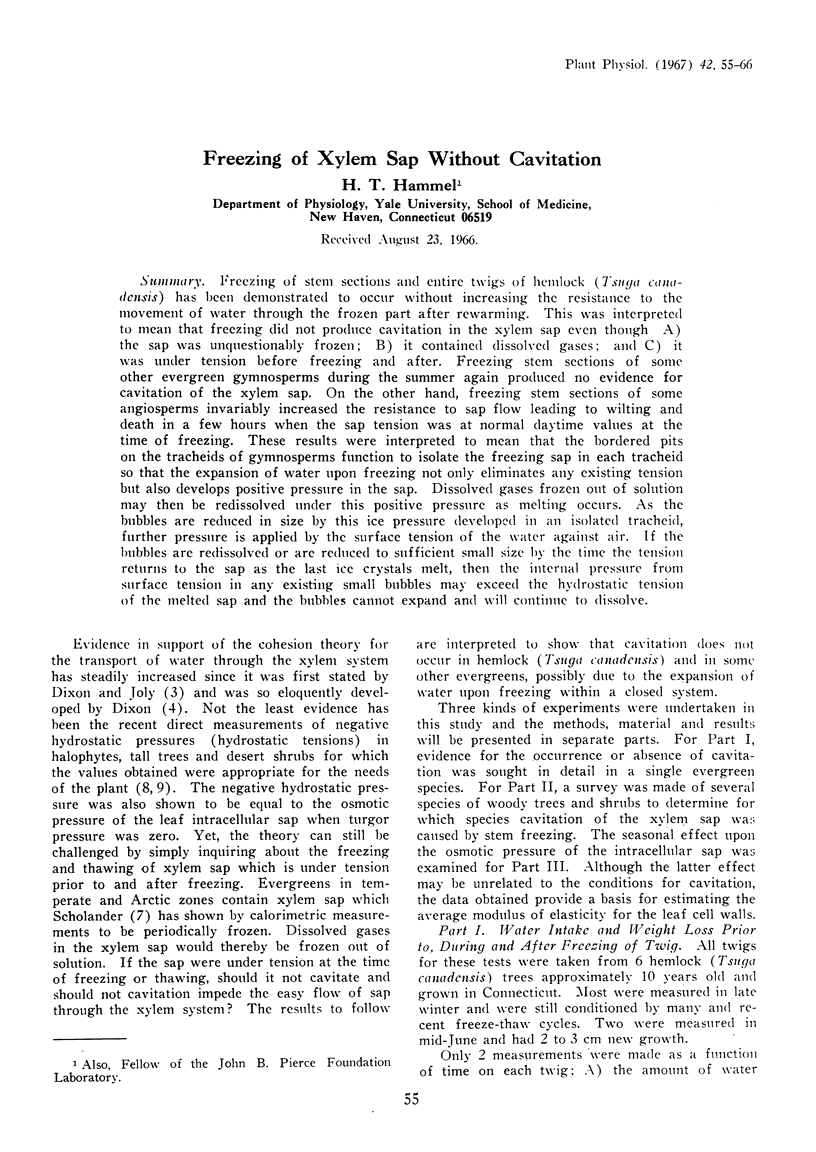
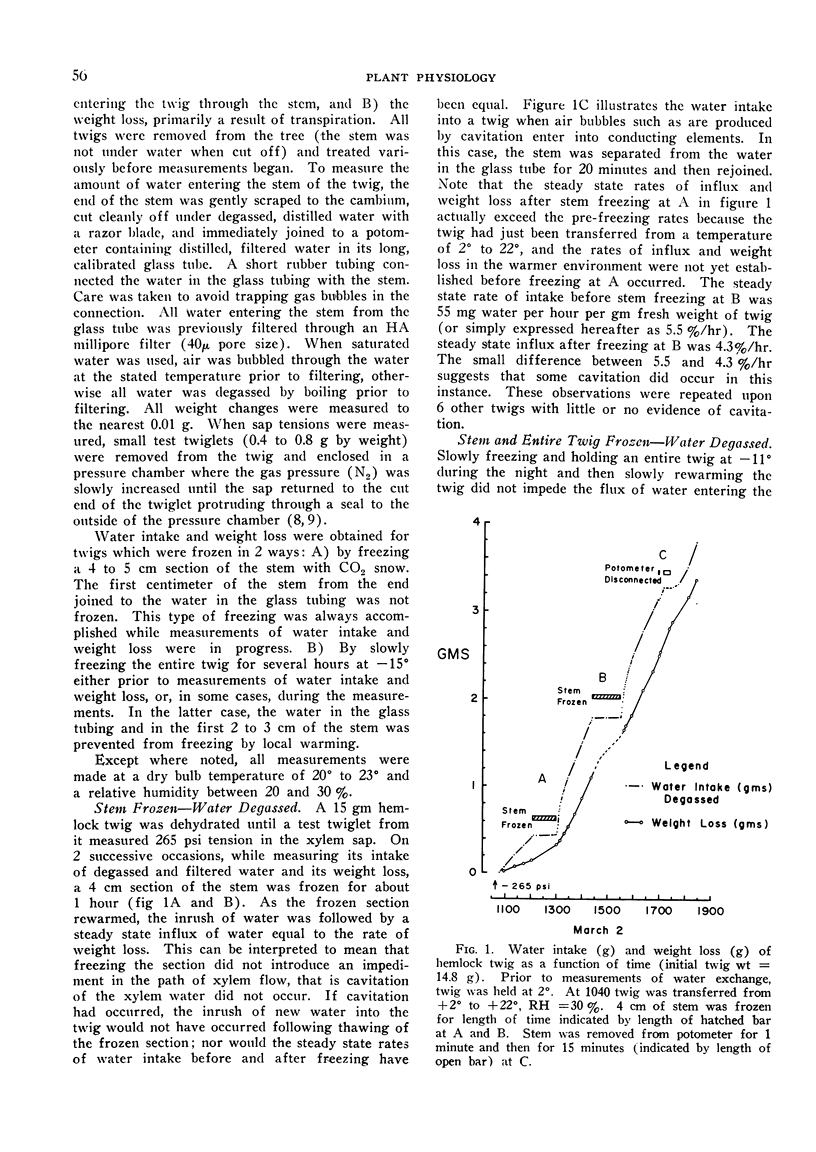
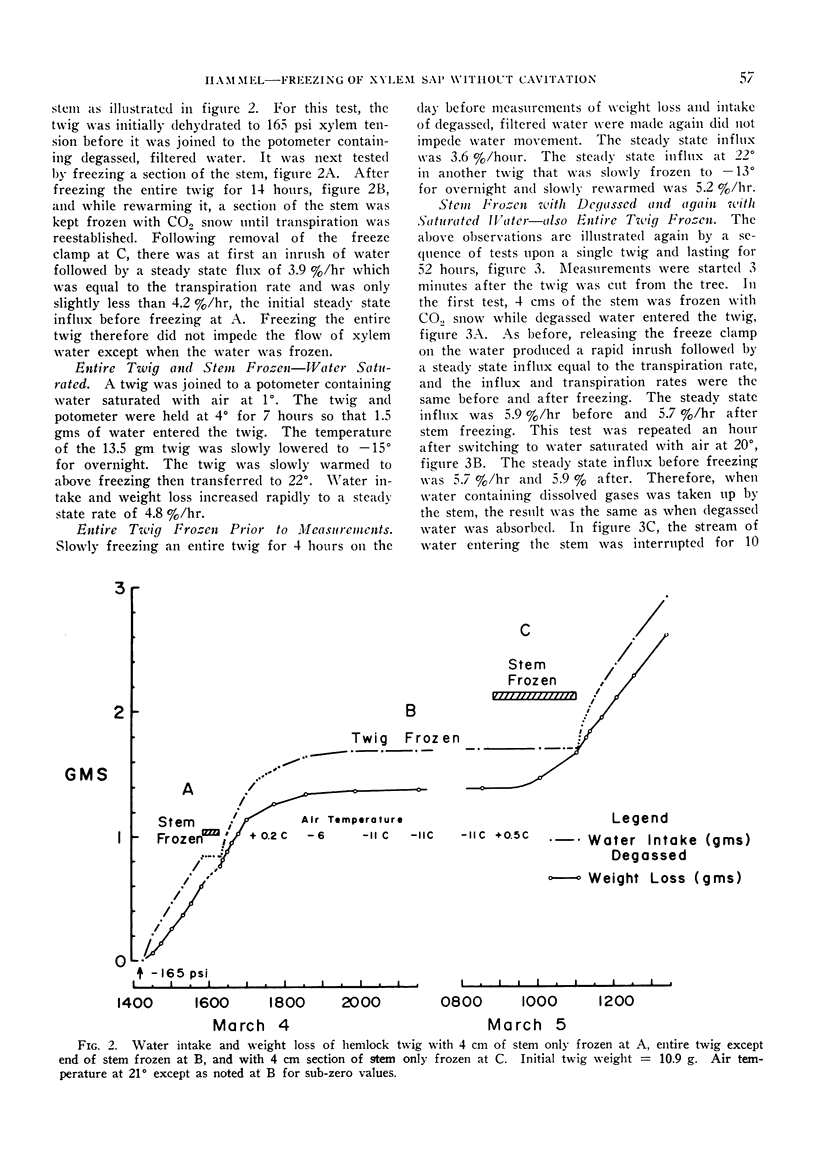
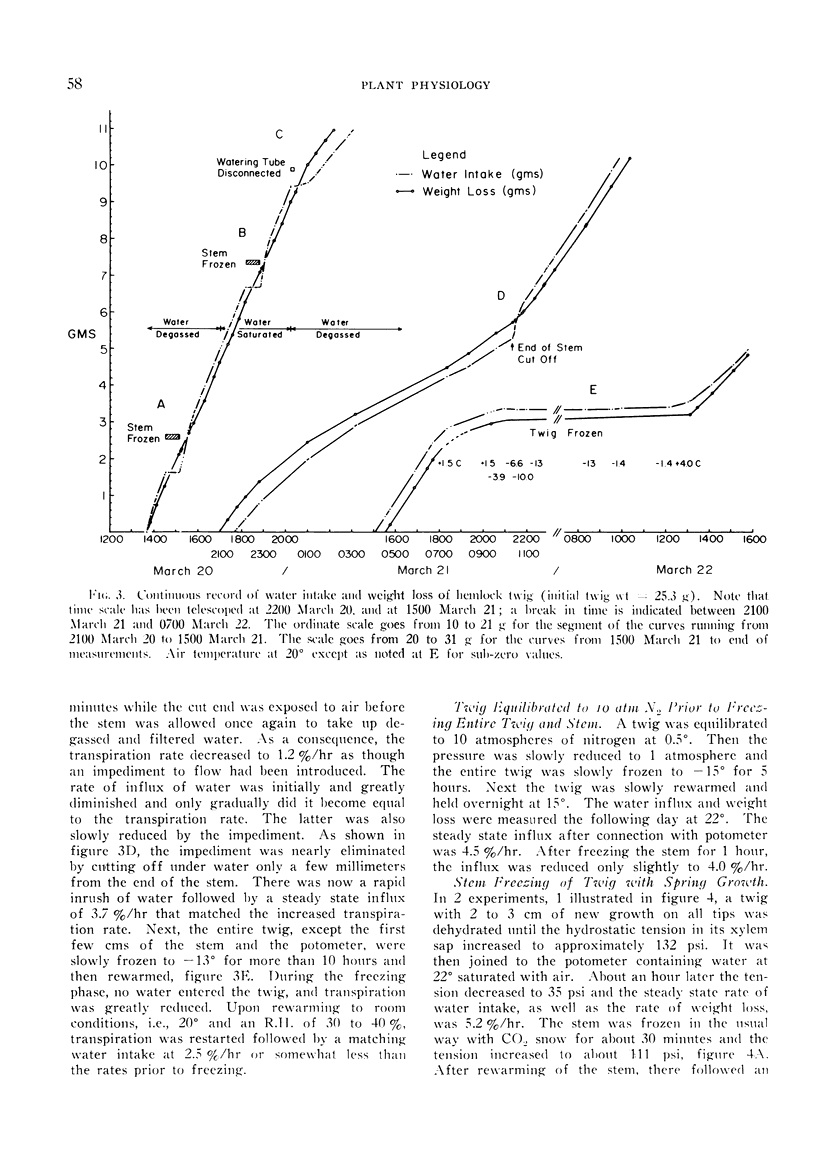
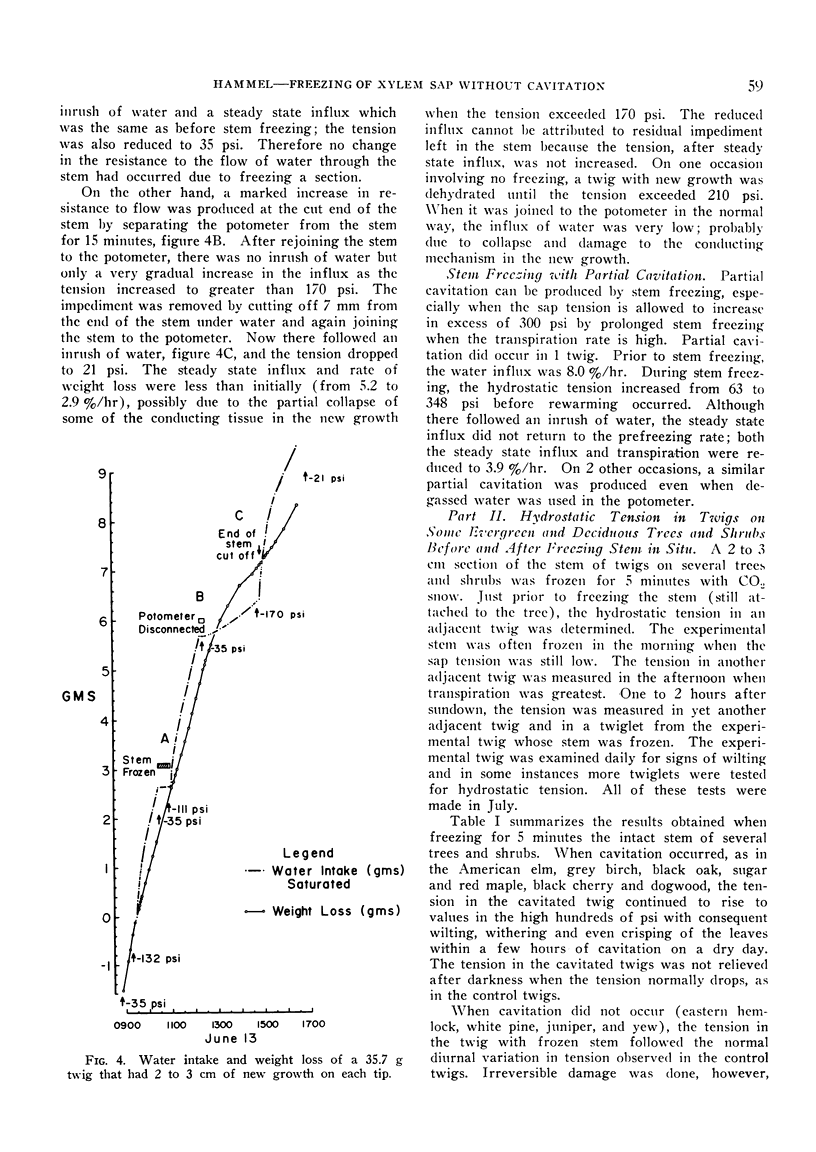
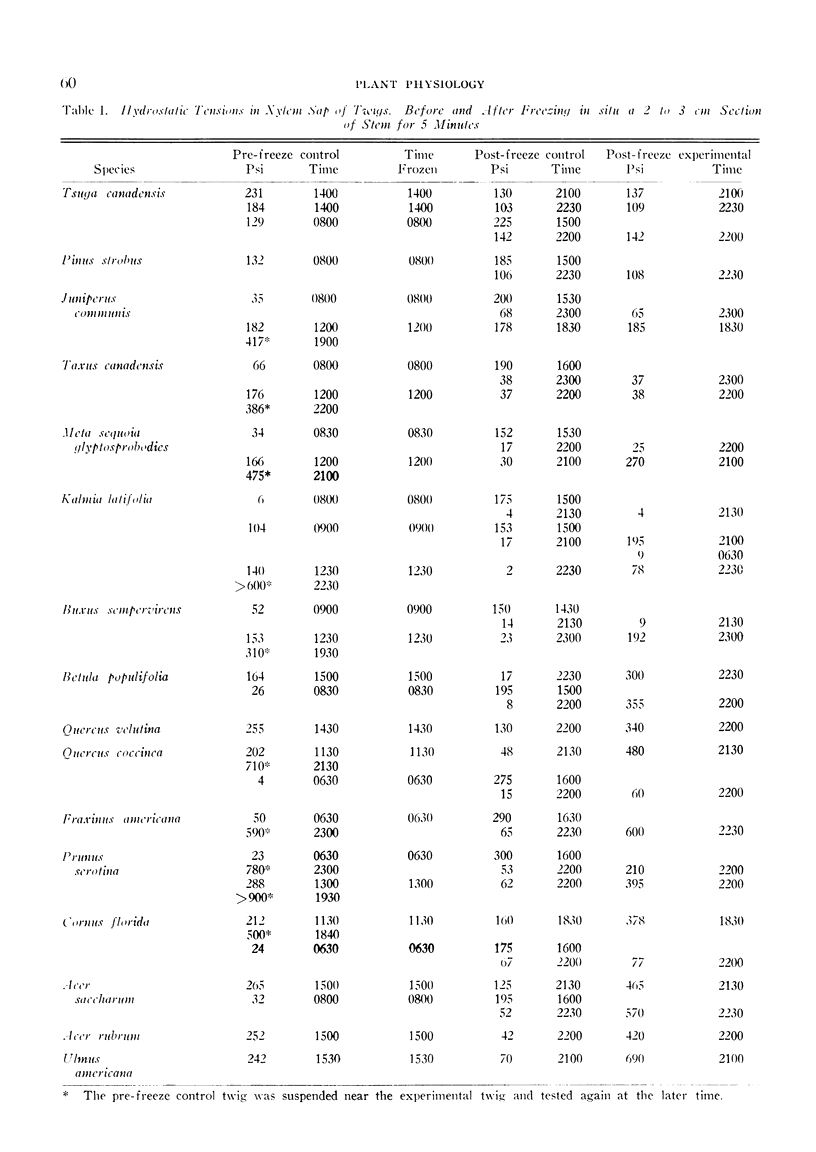
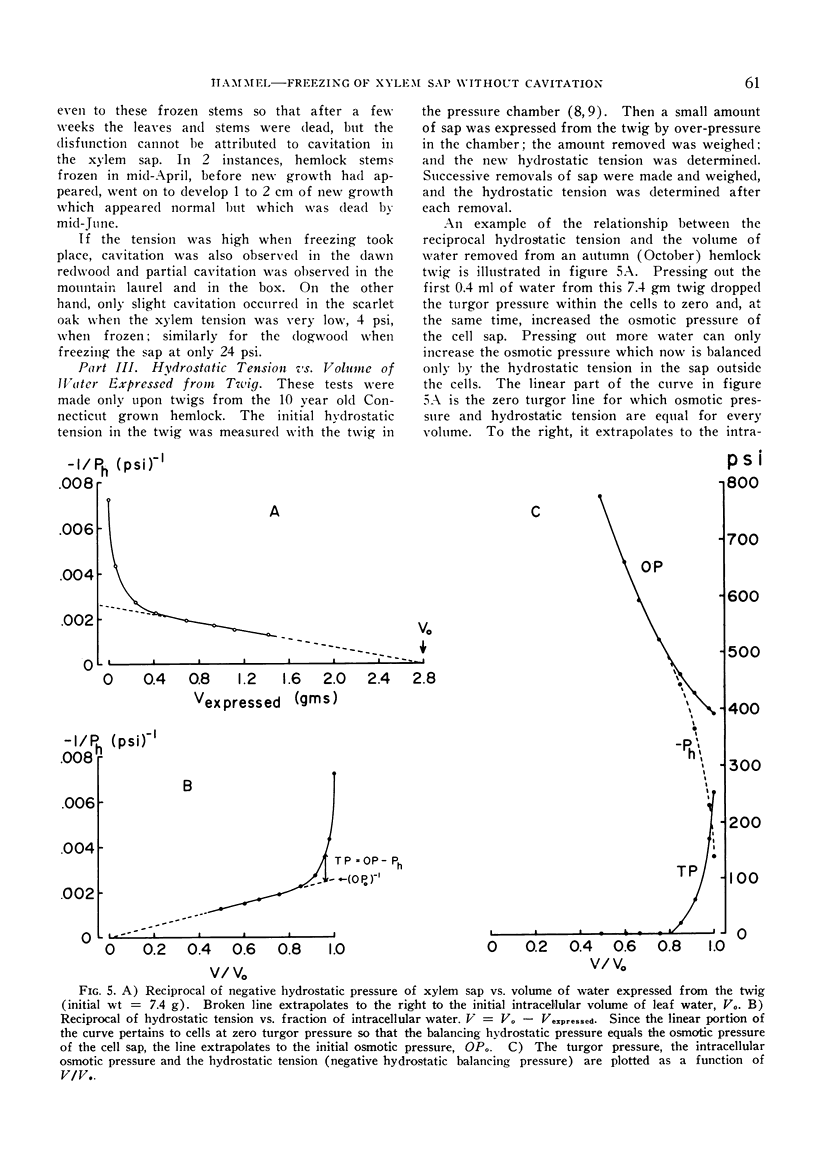
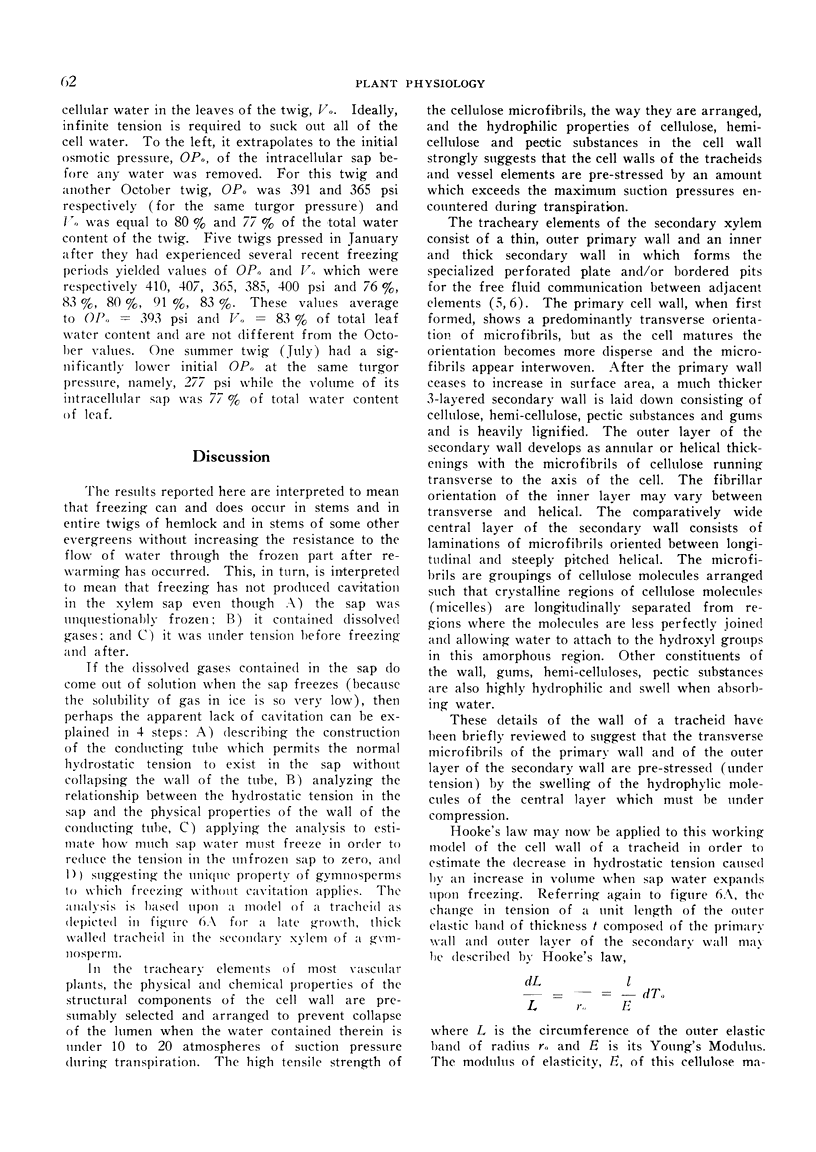
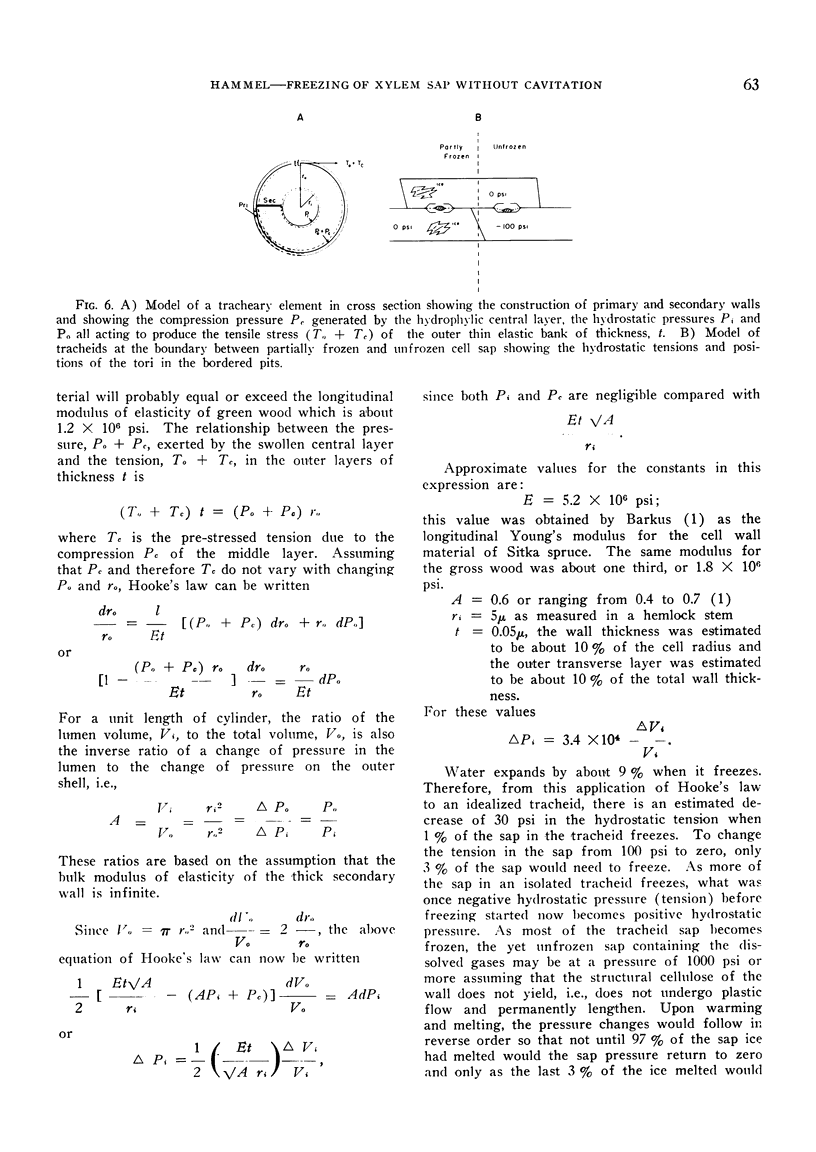
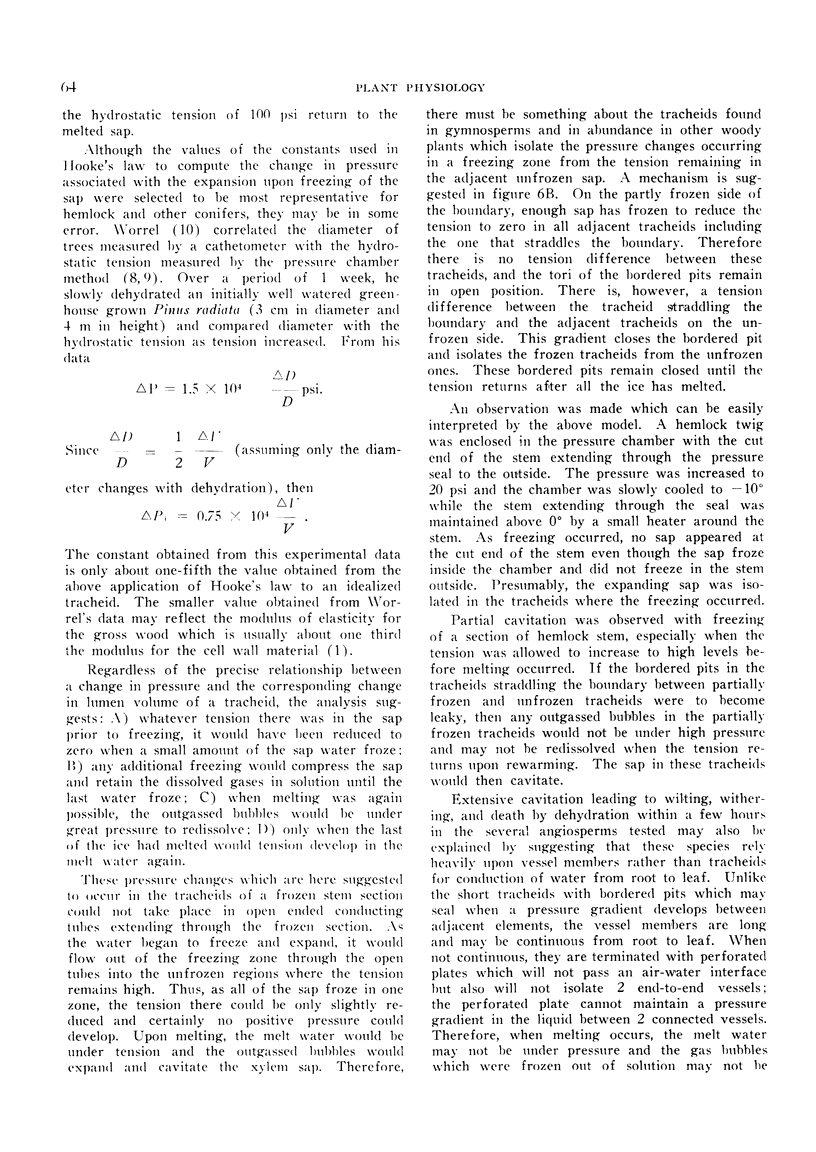
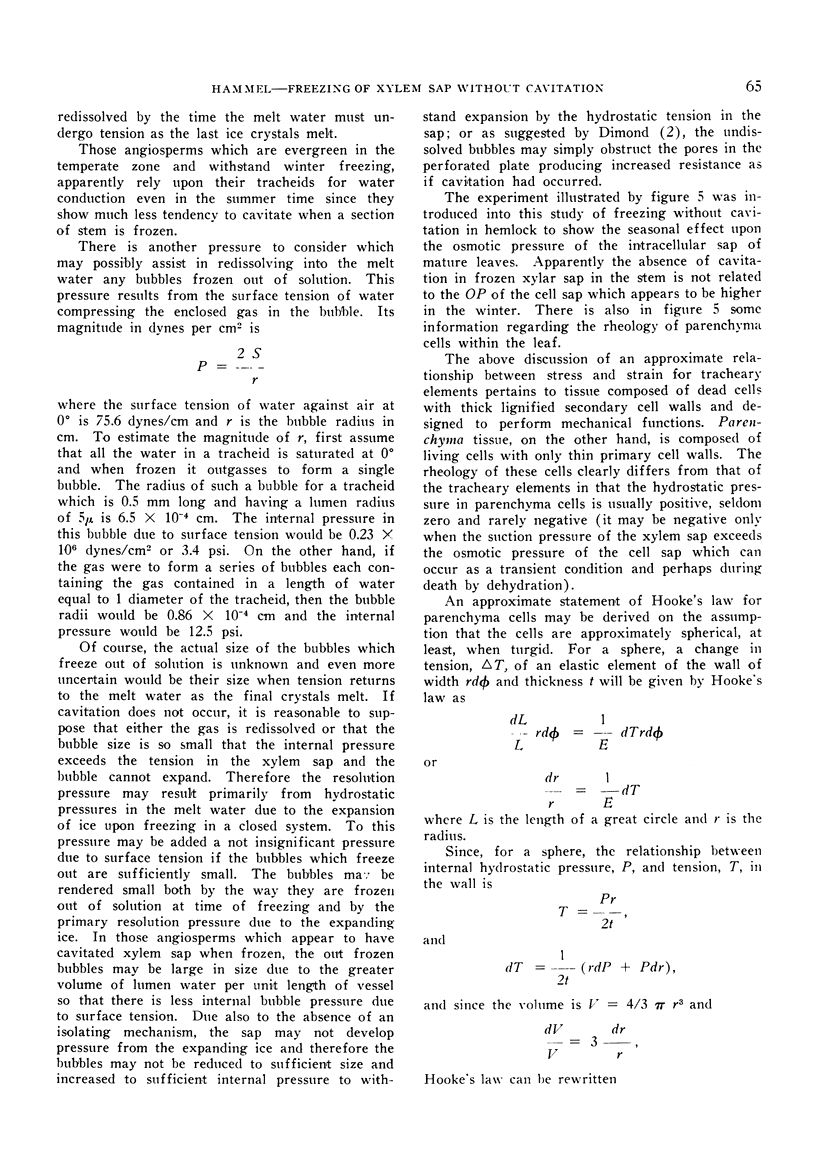
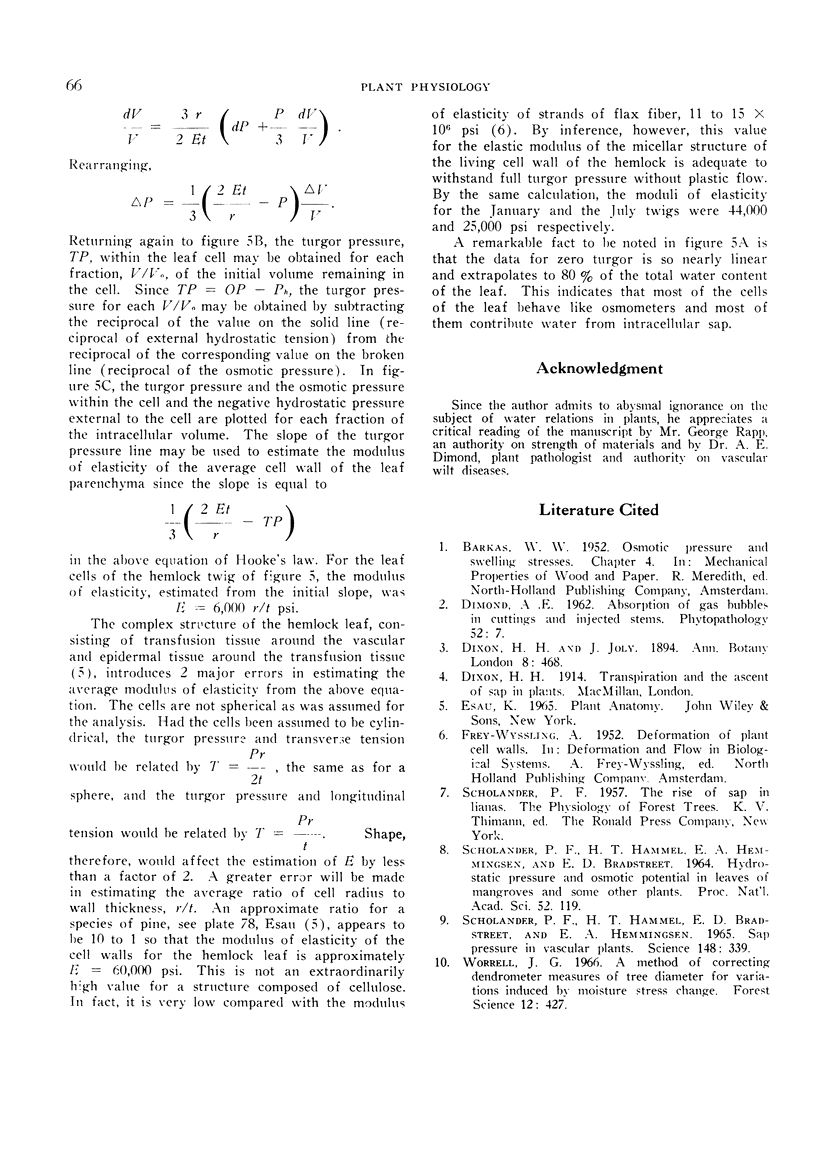
Selected References
These references are in PubMed. This may not be the complete list of references from this article.
- Scholander P. F., Bradstreet E. D., Hemmingsen E. A., Hammel H. T. Sap Pressure in Vascular Plants: Negative hydrostatic pressure can be measured in plants. Science. 1965 Apr 16;148(3668):339–346. doi: 10.1126/science.148.3668.339. [DOI] [PubMed] [Google Scholar]
- Scholander P. F., Hammel H. T., Hemmingsen E. A., Bradstreet E. D. HYDROSTATIC PRESSURE AND OSMOTIC POTENTIAL IN LEAVES OF MANGROVES AND SOME OTHER PLANTS. Proc Natl Acad Sci U S A. 1964 Jul;52(1):119–125. doi: 10.1073/pnas.52.1.119. [DOI] [PMC free article] [PubMed] [Google Scholar]


